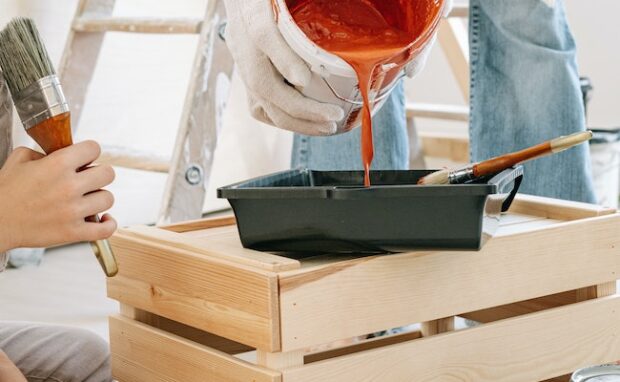Scientists create paint that produces oxygen
University of Surrey researchers created a paint that captures carbon dioxide and turns it into oxygen. Its plant-like feature caught the attention of NASA, which plans to use it for Mars habitats. The coating could be one of the many technologies to make the Red Planet livable for humans.
The oxygen paint can also have practical applications here on Earth. Coating large buildings with this paint can help them produce more oxygen for residents. As a result, it could promote the health of city dwellers worldwide. More importantly, it might help us live on the Red Planet and beyond.
This article will explain how Surrey scientists created their oxygen paint. Later, I will cover other NASA projects aimed at making life on the Moon and Mars a reality.
How does the oxygen paint work?

You might be surprised to learn that microbiologist Simone Krings led the research on oxygen paint. That’s because the unique building coating’s secret ingredient is Chroococcidiopsis cubana.
It is a microorganism that emits considerable amounts of oxygen daily while reducing the amount of surrounding carbon dioxide. It lives in deserts, which have similar conditions to Mars.
Also, you may find it in extremely dim places like the pitch blackness of ultra-deep caves and beneath the ocean floor. That is why it is a viable ingredient for paint with living bacteria, known as a biocoating.
However, turning it into an “oxygen paint” is more challenging than it seems. It must be porous enough for hydration and cell transport when it cools.
On the other hand, it must harden to protect the layer below. Consequently, the team mixed it with latex and nanoclay particles to achieve these properties while maintaining the cyanobacteria.
Then, the researchers tested the biocoating by checking its oxygen output and carbon dioxide input for 30 days. They found the paint released 0.4 grams of oxygen per gram of biomass daily.
You may also like: Stanford paint helps reduce utility bills
It sustained that daily amount for an entire month, accumulating up to 400 grams of oxygen for every kilogram of paint while absorbing carbon dioxide. Later, the researchers called their invention Green Living Paint.
Its cyanobacteria will likely last in the Red Planet due to its unique properties. “The photosynthetic Chroococcidiopsis have an extraordinary ability to survive in extreme environments, like droughts and after high levels of UV radiation exposure,” microbiologist Simone Krings said.
“This makes them potential candidates for Mars colonization,” she added. The experts admitted that the amount won’t be enough for a Mars habitat. Still, the paint could help produce as much oxygen as needed to make the Red Planet habitable.
How will NASA make Mars habitats?

The National Aeronautics and Space Administration has been creating other gadgets intended to help humans live on Mars. Besides the oxygen paint, it created the Mars Oxygen In-Situ Resource Utilization Experiment or MOXIE.
The MOXIE website says it is a “solid oxide electrolyzer cell,” which functions like a fuel cell in reverse. Conventional cells turn fuel and oxygen to produce a stable chemical product and electricity.
MOXIE takes water and electricity to make oxygen and hydrogen. However, it only produced 5 grams, equivalent to 10 minutes of breathable air for an astronaut performing normal activities.
You may also like: Perseverance Mars rover produces oxygen
“This is the first demonstration of actually using resources on the surface of another planetary body and transforming them chemically into something that would be useful for a human mission,” said Jeffrey Hoffman, MOXIE deputy principal investigator. “It’s historic in that sense.” NASA plans to create a larger version that could facilitate manned space missions.
Believe it or not, NASA also worked with American architecture firm Red House to make mushroom houses on Mars. They plan to use the mycelium mushroom to grow the foundations for these habitats.
“In a dream scenario, it could be erected in a matter of hours or even minutes if you had the right kind of pressure pumping into it. Then, creating the solid, dry biomaterial that becomes insulating would ideally take four weeks,” said Red House principal architect Christopher Maurer.
Conclusion
University of Surrey scientists created an oxygen paint containing cyanobacteria. It functions like a plant, taking carbon dioxide from the surroundings and turning it into breathable air.
It might also improve other NASA technologies, such as its proposed mushroom homes. They could coat those structures with the biocoating to protect them while making oxygen.
However, the Green Living Paint still needs more research and development for practical applications. Learn more about the latest digital trends at Inquirer Tech.